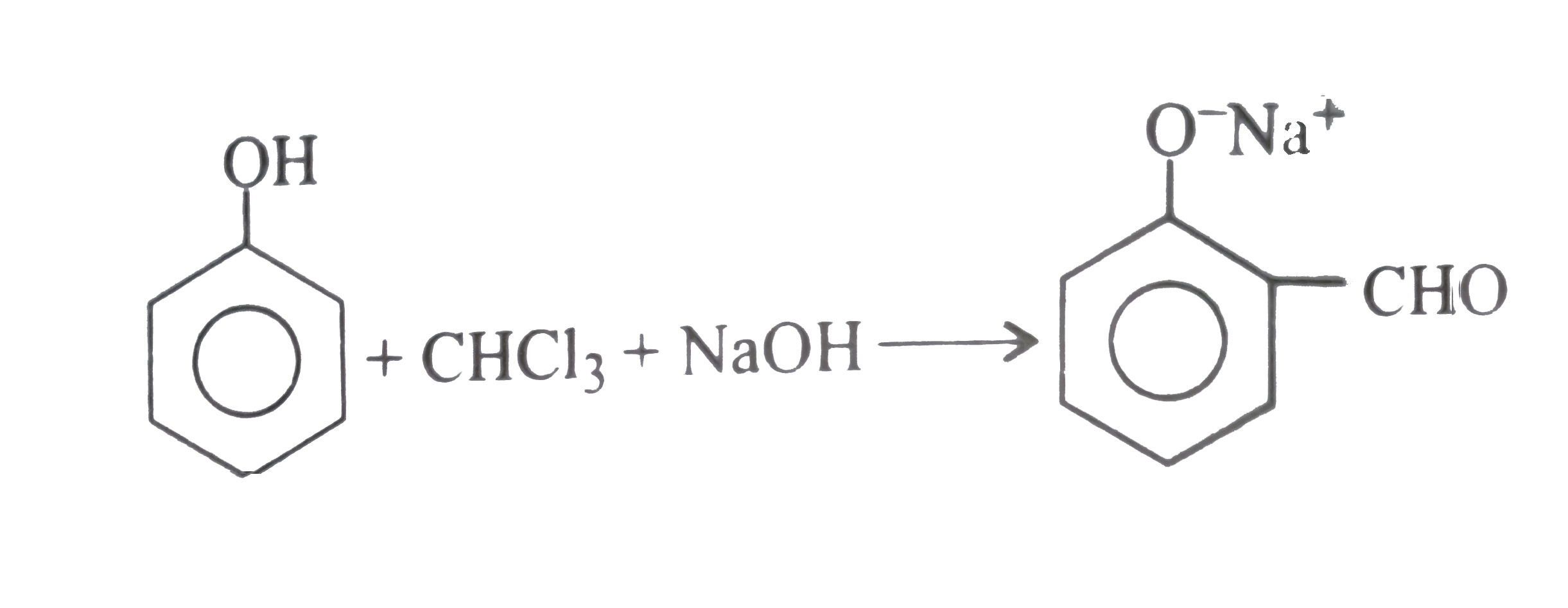Complete Solutions to QUESTION of chapter NEET 2018 of Class 12 book with complete answers and questions
| Class 12 | CHEMISTRY |
| Chapter | NEET 2018 |
| NEET PREVIOUS YEAR | QUESTION |
| Number Of Questions | 45 |
| Academic Year | 2023-24 |
The correct order of N-compounds in its decreasing order of oxidation states is
02:17View SolutionWhich one of following elements is unable to from `MF_(6)^(3-)` ion?
01:31View SolutionConsidering Ellingham diagram, which of the following metals can be used to reduce alumina?
04:42View SolutionThe increasing order of atomic radii of the following group 13 elements is
02:37View SolutionWhich of the following is not true for halogens ?
01:55View SolutionIn the structure of `ClF_(3)`, the number of lone pairs of electrons on central atom 'Cl' is
03:50View SolutionIdentify the major product P, Q and R in the following sequence of reactions:
 04:40View Solution
04:40View SolutionWhich of the following compounds can form a Zwitter ion ?
04:04View SolutionRegarding cross-linked or network polymers, which of the following statements is incorrect?
03:48View SolutionNitration of aniline in strong acidic medium also gives m-nitroaniline because
04:31View SolutionThe difference between amylose and amylopectin is
02:34View SolutionA mixture of 2.3 g formic acid and 4.5 g oxalic acid is treated with conc. `H_(2)SO_(4)`. The evolved gaseous mixture is passed through KOH pellets. Weight (in g) of the remaining product at STP will be
04:25View SolutionWhich of the following oxides is most acidic in nature ?
01:44View SolutionWhich oxide of nitrogen is not a common pollutant introduced into the atmosphere both due to natural and human activity?
03:07View SolutionThe compound `A` on treatment with `Na` gives `B`, and with `PCl_(5)` gives `C`. `B` and `C` react together to give di Ethyl ether. `A,B` and `C` are in the order
02:51View SolutionThe compound `C_(7)H_(8)` undergoes the following reactions :
`C_(7)H_(8) overset(3Cl_(2)//Delta)to Aoverset(Br_(2)//Fe)toB overset(Zn//HCl)toC`
The product 'C' is04:17View SolutionHydrocarbon (A) reacts with bromine by substitution to form an alkyl bromide which by Wurtz reaction is converted to gaseous hydrocarbon containing less than four carbon atoms. A is
03:34View SolutionWhich of the following molecules represents the order of hybridisation `sp^(2),sp^(3),sp from left to right atoms ?
02:46View SolutionWhich of the following carbocations is expected to be most stable ?
View SolutionWhich of the following is correct with respect to `-I` effect of the substitutes? `(R=alkyl)`
01:45View SolutionIn the reaction
 the electrophile involved is 01:42View Solution
the electrophile involved is 01:42View SolutionCarboxylic acid have higher boiling points than aldehydes, ketones and even alcohol of comparable molecular mass. It is due to their
02:07View SolutionCompound `A,C_(8)H_(10)O`, is found to react with `NaOI` (produced by reacting `Y` with `NaOH`) and yields a yellow precipitate with characteristic smell.
`A` and `Y` are respectively02:34View SolutionMatch the metal ions given in Column I with the spin magnetic moments of the ions given in Column II and assign the correct code :
 07:44View Solution
07:44View SolutionWhich one of the following ions exhibits d-d transition and paramagnetism as well ?
08:00View SolutionIron carbonyl, `Fe(CO)_5` is
02:23View SolutionThe type of isomerism shown by the complex `[COCl_(2)(en)_(2)]` is
02:19View SolutionThe geometry and magnetic behaviour of the complex `[Ni(CO)_4]` are
02:57View SolutionFollowing solutions were prepared by mixing different volumes of NaOH and HCl of different concentrations:
a. 60 mL `(M)/(10) HCl + 40 mL (M)/(10)` NaOH
b. 55 mL `(M)/(10) HCl + 45 mL (M)/(10)` NaOH
c.75 mL `(M)/(5) HCl + 25 mL (M)/(5)` NaOH
d. 100 mL `(M)/(10) HCl + 100 mL (M)/(10)` NaOH
pH of which one of them will be equal to 1 ?03:36View SolutionOn which of the following properties does the coagulating power of an ion depend?
00:57View SolutionGiven van der Waals constant for `NH_(3), H_(2), O_(2) and CO_(2)` are respectively `4.17, 0.244, 1.36 and 3.59`, which one of the following gases is most easily liquefied?
01:38View SolutionThe solubility of `BaSO_(4)` in water is `2.42xx10^(-3) gL^(-1)` at `298 K`. The value of its solubility product `(K_(sp))` will be (Given molar mass of `BaSO_(4)=233 g mol^(-1)`)
03:07View SolutionIn which case is the number of molecules of water maximum?
04:28View SolutionThe correct difference between first and second order reactions is that
06:48View SolutionAmong `CaH_(2),BeH_(2),BaH_(2),` the order of ionic character is
01:39View SolutionConsider the change in oxidation state of Bromine corredponding to different emf values as shown in the diagram below :
 .
.
The the species undergoing dispropprtionation is .06:07View SolutionFor the redox reaction,
`MnO_(4)^(-) + C_(2)O_(4)^(2-) + H^(+) rarr Mn^(2+) + CO_(2) + H_(2)O`
the correct coefficients of the reactants for the balanced reaction are02:38View SolutionWhich one of the following condition will favour maximum formation of the product in the reaction. `A_(2)(g) + B_(2)(g)hArrX_(2)(g) Delta_(r)H = - X` kJ ?
03:47View SolutionWhen initial concentration of the reactant is doubled, the half-life period of a zero order reaction
01:01View SolutionIf the bond dissociation energies of `XY`,`X_(2)` and `Y_(2)` are in the ratio of `1:1:0.5` and `DeltaH_(f)` for the formation of `Xy` is `-200 KJ//mol`. The bond dissociation energy of `X_(2)` will be `:-`
03:24View SolutionThe correction factor 'a' to the ideal gas equation corresponds to
01:53View SolutionConsider the following species
`CN^(-),CN^(-),NO and `CN`.
Which one of these will hqave the highest bond order ?03:50View SolutionMagnesium reacts with an element (X) to form an ionic compound. If the ground state electronic configuration of (X) is `1s^(2),2s^(2)2p^(3)`, the simplest formula for this compound is
01:58View SolutionIron exhibits `bcc` structure at roomj temperature. Above `9000^(@)C`, it transformers to `fcc` structure. The ratio of density of iron at room temperature to that at `900^(@)C` (assuming molar mass and atomic radius of iron remains constant with temperature) is
04:18View SolutionWhich one is a wrong statement ?
01:26View Solution
QUESTION questions and complete solutions for chapter NEET 2018 of NEET PREVIOUS YEAR (YEARWISE + CHAPTERWISE) of Class 12
